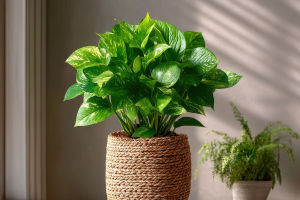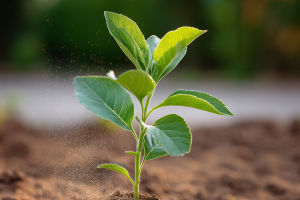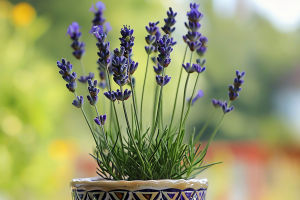We might not often think of plants as "breathing" in the same way humans do, but they actually undergo a fascinating process of gas exchange that is essential for their survival.
Plants use specialized structures called stomata to interact with the environment, allowing them to take in carbon dioxide (CO2) and release oxygen (O2).
But how exactly does this work? Let's take a deeper look at the role of stomata and the science behind plant respiration and photosynthesis.
What Are Stomata?
Stomata are tiny openings found mainly on the surface of plant leaves and stems. They act like gateways, allowing gases like oxygen and carbon dioxide to move in and out of the plant. Each stoma (singular of stomata) is surrounded by two guard cells, which are responsible for opening and closing the stomatal pore. This dynamic system regulates the exchange of gases and helps the plant maintain balance.
The main function of stomata is to facilitate gas exchange. During photosynthesis, plants need carbon dioxide (CO2) to make glucose, and they release oxygen (O2) as a by-product. Stomata are the key players in this process, allowing CO2 to enter and O2 to exit the plant's system.
How Do Stomata Control Gas Exchange?
The opening and closing of stomata are controlled by environmental factors such as light, humidity, temperature, and the plant's internal needs. During the day, when there is light available, plants open their stomata wide to absorb carbon dioxide for photosynthesis. This is especially important for sunlight-driven photosynthesis, which requires the intake of CO2 to convert it into sugars.
At night, however, when photosynthesis is not taking place due to the lack of sunlight, stomata may close to conserve water and energy. Plants lose a lot of water through transpiration (the process of water vapor exiting through stomata), so they need to control the rate of this water loss by regulating the opening of stomata.
Gas Exchange: The Mechanism of Life
The main gases exchanged through the stomata are carbon dioxide and oxygen, both of which play crucial roles in the life of a plant. When a plant "breathes in," carbon dioxide enters through the stomata and is used in photosynthesis to produce glucose. This glucose provides the plant with the energy it needs to grow and survive. At the same time, oxygen, which is a by-product of photosynthesis, exits the plant through the same pores.
It's important to note that the gas exchange in plants is not just about photosynthesis. During respiration, plants also take in oxygen and release carbon dioxide. This process is similar to how animals breathe. While photosynthesis uses CO2 and produces O2, respiration uses O2 and produces CO2. Both processes rely on the stomata to regulate the flow of gases into and out of the plant.
Why Is Gas Exchange Important for Plants?
Gas exchange is crucial for a plant's survival because it enables several vital processes. First, the intake of carbon dioxide is necessary for photosynthesis, the process by which plants produce their own food. Without this, plants wouldn't be able to create the glucose they need to grow and thrive.
Secondly, the release of oxygen is essential for the environment and other organisms. Oxygen is a vital part of the atmosphere, and plants contribute significantly to the oxygen levels in our air. This is why plants are often referred to as the “lungs of the planet.”
Lastly, the ability to regulate stomata helps the plant maintain water balance. If the plant loses too much water through transpiration, it can become dehydrated, which negatively impacts its growth. By opening and closing stomata based on environmental conditions, the plant can control its water loss and prevent dehydration.
The Influence of Environmental Factors
The behavior of stomata is not static—it changes depending on external factors. For instance, light is a major factor that influences stomatal opening. During the day, when there is sunlight, the stomata are open to allow the intake of carbon dioxide. However, when it gets dark or when the plant experiences dry conditions, the stomata close to prevent excess water loss.
Humidity is another factor that plays a role in stomatal regulation. In a high-humidity environment, the plant loses less water through transpiration, so it may keep its stomata open for longer periods. In dry conditions, the plant will close its stomata to minimize water loss and conserve resources.
Temperature also affects stomatal activity. In hotter conditions, the plant might close its stomata to prevent excessive water loss due to transpiration, while in cooler weather, stomata may remain open longer for efficient gas exchange.
Conclusion: A Complex Yet Essential Process
In conclusion, stomata are essential for plants to carry out their life-sustaining processes of photosynthesis and respiration. By controlling the intake of carbon dioxide and the release of oxygen, stomata help plants create the energy they need to grow and develop. They also play a key role in regulating water loss through transpiration.
Next time you admire a plant, remember that it's not just absorbing sunlight and looking pretty—it's actively interacting with the environment through its stomata, ensuring that life can continue both for the plant and for the ecosystem around it. Isn't nature incredible?


